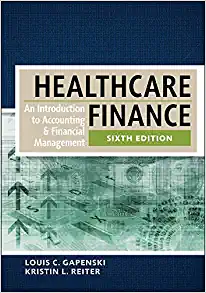
Please see attached Questions that I need help with.
Assignment 4 Instructions Assignment 4 should be submitted after you have completed Unit 7. This assignment is worth 15 percent of your final grade. Assignment 4 contains six problems. The maximum mark for each problem is noted at the beginning of the problem. This assignment has a total of 100 marks. Read the requirements for each problem and plan your responses carefully. Although your responses should be concise, ensure that you answer each of the required components as completely as possible. If supporting calculations are required, present them in good form. When you receive your graded assignment, carefully review the comments the marker has made. This review component is an important step in your learning process. If you have any questions or concerns about the evaluation, please contact the Student Support Centre. Problem 1 (20 marks) The following information is given about options on the stock of a certain company: S0 = $20, X =$20, r =5% (c.c.), T = 0.5 year, = 0.20 No dividends are expected. One option contract is for 100 shares of the stock. All notations are used in the same way as in the Black-Scholes-Merton Model. Answer the following questions: 1. What is the European call option price and European put option price, according to the Black-Scholes model? 2. What is the cost of buying a protective put? 3. What is the cost of writing a covered call? FNCE 401 v6 Assignment 4 Oct 9/2013 4. What will be the payoff and profit of the protective put if the stock price on maturity is $16, $18, $20, $22, or $24? FNCE 401 v6 Assignment 4 Oct 9/2013 Problem 2 (15 marks) A stock currently sells for $50. In six months, it will either rise to $55 or decline to $45. The risk-free interest rate is 6% per year. 1. Find the value of a European call option with an exercise price of $50. 2. Find the value of a European put option with an exercise price of $50, using the binomial approach. 3. Verify the put-call parity using the results of Questions 1 and 2. Problem 3 (15 marks) An investor sold seven contracts of June/2012 corn. The price per bushel was $1.64, and each contract was for 5000 bushels. The initial margin deposit is $2000 per contract with the maintenance margin at $1250. 1. How much did the investor have to deposit on the investment? 2. The prices of the futures on the four days following the short sales were 1.60, 1.66, 1.70, and 1.75. Calculate the current balance on each of the next four days. 3. If the investor closed out her position on the fifth day, what was her final gain or loss over the five days in dollars and as a percentage of investment? 4. If the investor kept her position, and the futures price on the sixth day was 1.80, would the investor face a margin call? If yes, how much would she need to put up? Problem 4 (15 marks) Suppose the US dollar and Euro interest rate for the next one year are 1.5% and 2%, respectively. Both are annually compounded. The spot price of Euro is $1.3000, and the one-year forward price of Euro is $1.2900. Determine the correct forward price and recommend an arbitrage strategy. FNCE 401 v6 Assignment 4 Oct 9/2013 Problem 5 (15 marks) The following data are available relating to the performance of CSF Equity Fund and the market portfolio: Fund A Fund B Fund C Market Portfolio Average return 18% 12% 30% 15% Standard deviation 25% 15% 30% 20% Beta 1.25 0.6 2.5 The risk-free return during the sample period was 5%. 1. Calculate the performance measures of each of the funds (A, B, and C) using Sharpe's, Treynor's, and Jensen's measures. Rank the results for each of the funds. 2. Identify the fund(s) that outperformed the market using the Sharpe's ratio and Treynor's measure, respectively. 3. Are the rankings consistent? Explain any inconsistency. Problem 6 (20 marks) The following performance information given to you: Benchmark Portfolio Weight Return Stocks 0.6 -5.00% Bonds 0.3 3.50% T-Bills 0.1 1.00% Joe's Portfolio Weight Return Stocks 0.5 -4.00% Bonds 0.2 2.50% Cash 0.3 1.00% Kim's Portfolio Weight Return Stocks 0.3 -5.00% Bonds 0.4 3.50% Cash 0.3 1.00% The risk-free rate is 1% and the standard deviation for the Benchmark portfolio is 3.50%, Joe's portfolio is 5.00% and Kim's portfolio is 3.00%. FNCE 401 v6 Assignment 4 Oct 9/2013 1. Compare Joe's and Kim's performance relative to the benchmark in terms of portfolio returns. 2. If they are beating the market, determine the sources of their success in terms of security selection and asset allocation. (a) Who is superior in security selection? (b) Who is superior in asset allocation? 3. Using Sharpe Index, determine which manager is performing better than the market in a risk adjusted basis. FNCE 401 v6 Assignment 4 Oct 9/2013








